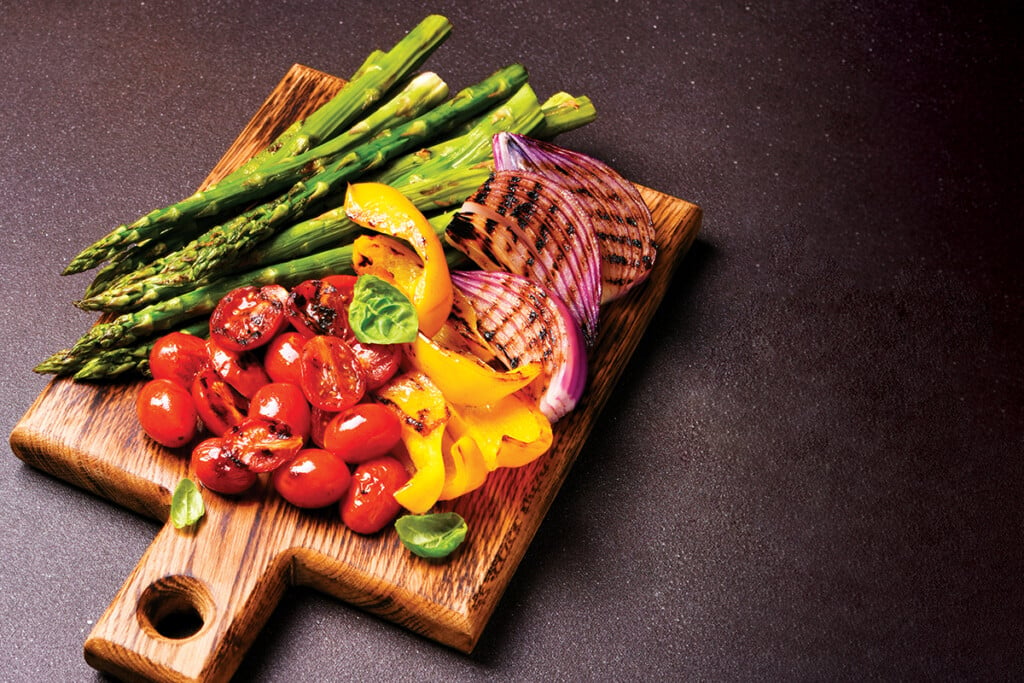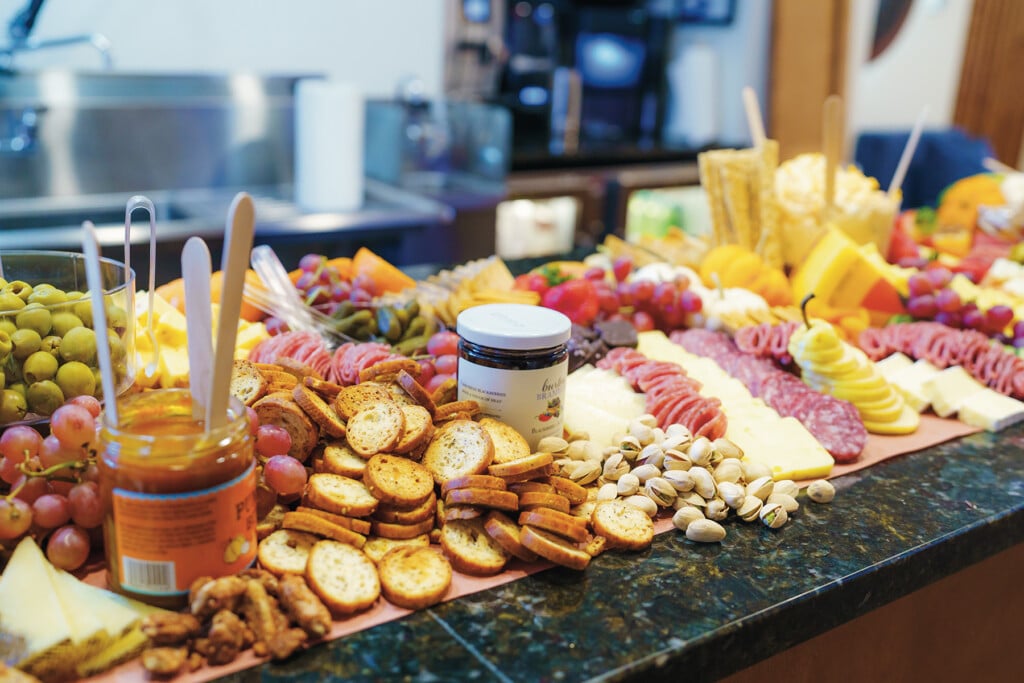Get Your Grill On
Sliced, skewered or seasoned, veggies bring bold flavors to your backyard barbecue

As high-tech and intricate as grills have become, you can use them for everything, from charring steaks to baking cookies. Whether you’re a purist who prefers to break out the briquettes or find that nothing gets you going like gas, the grill is the perfect tool for making magic with your veggies.
Slice and Dice

Coat your vegetable pieces in oil before putting them on the grill. Photo by Getty Images Plus: merc67
Surface area is crucial to grilling, and greater surface areas increase the rate of cooking. Consistency is also crucial; cutting your veggies into equal-sized pieces ensures that everything cooks at the same rate.
Not all vegetables need to be cut up, of course — an ear of corn, for example. But cutting does speed things up and produces a more even cook. Thin or ribboned cuts of veggies like zucchini will have a very short window of time before risking overcooking or over-charring. Thicker cuts will take longer but will be easier to maneuver on the grill with tongs. By contrast, smaller pieces may require the use of a grilling skillet or foil packet to prevent them from falling through the grates. Skewers are also useful in maximizing efficiency but keep like vegetables together for an even cook.
Season Like a Pro

When it comes to seasoning, Jennifer Leale, blogger and founder of Tallahassee Foodies, recommends olive oil, sea salt, pepper and a touch of Chef Nikki’s Pro Seasoning. Photo courtesy of Nikki Pettineo
Coat your vegetable pieces in oil before putting them on the grill. Olive and coconut oils are ideal for grilling. Peanut works well, too, but be mindful of those with allergies. Also, note that each will lend different flavors to your food. If you want to season your veggies, do so very lightly, as salt leeches moisture from vegetables. Too much salt before grilling can make it difficult to achieve a charred exterior.
“My overall go-to seasoning is EVOO (extra virgin olive oil), sea salt and pepper to taste, and always a touch of Chef Nikki’s Pro Seasoning to add a bit more flavor,” said Jennifer Leale, blogger and founder of Tallahassee Foodies.
“In the summer, we grow zucchini in our garden. I like to slice it fairly thick and mix it in a large bowl with olive oil, salt and pepper, and grill it until it’s tender, but not too soft. Then I finish it with a light dusting of either Herbs de Provence or Italian seasonings.”
Handle the Heat
If your grill comes with a built-in thermometer, make it your friend. When grilling vegetables, hotter is not always better. Temps of roughly 400–425 F are typically best.
“Different vegetables require different cooking times over medium to medium-high heat,” Leale said. “To achieve a caramelized flavor for all veggies, we crank up the heat in the
final moments to finish them off with a tasty char.”
Direct or Indirect

Leale said she prefers to cook her vegetables on the upper rack to prevent them from burning. “This makes it easier to control their temperature,” she explained. Photo by Getty Images Plus: arinahabich
In grilling, direct heat refers to cooking directly over the flames, while indirect heat involves cooking adjacent to your heat source. A combination of direct and indirect methods is often useful for grilling vegetables that take longer to cook through, such as whole carrots or cabbage wedges.
“I like to cook my vegetables on the upper rack of the grill to keep them from burning,” Leale said. “This makes it easier to control their temperature. Also, until you get to know your particular type of grill, keep checking on your veggies often so they don’t overcook or burn. A gas grill cooks differently than an egg, which is best for a low and slow cooking method.”
Use Your Lid

Photo by Getty Images Plus: arinahabich
Keeping the grill lid open or closing it while you’re grilling is determined by what you’re cooking. For smaller or more delicate vegetables, keep the lid off. Thicker, more dense vegetables, however, benefit from a closed lid because it creates a convection effect, circulating the hot air and helping cook more thoroughly. Thicker veggies like whole cauliflower may need closed-lid grilling, while asparagus and similarly thin vegetables benefit from open grilling.
Post-Grill Seasoning

Photos by Getty Images Plus: MaxCab
The best time to season grilled veggies is after they’re finished on the grill. Salt and black pepper, a squeeze of lemon or a simple sauce are all great ways to enhance the taste of your grilled veg. But remember to be conservative rather than heavy-handed. Let that grill flavor shine!
Sara Santora contributed to this article.


